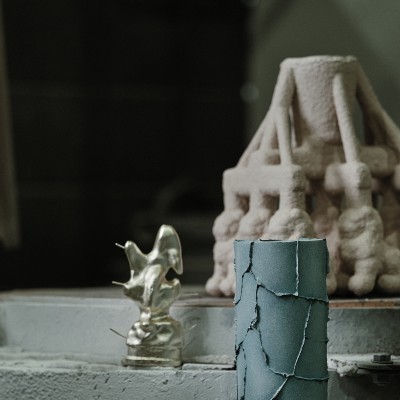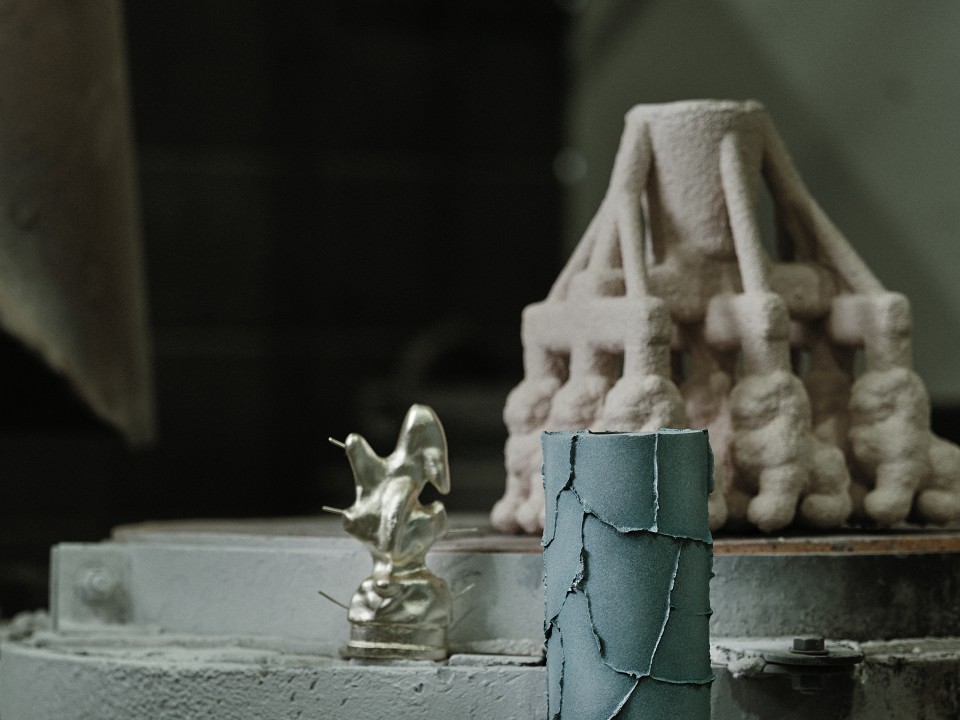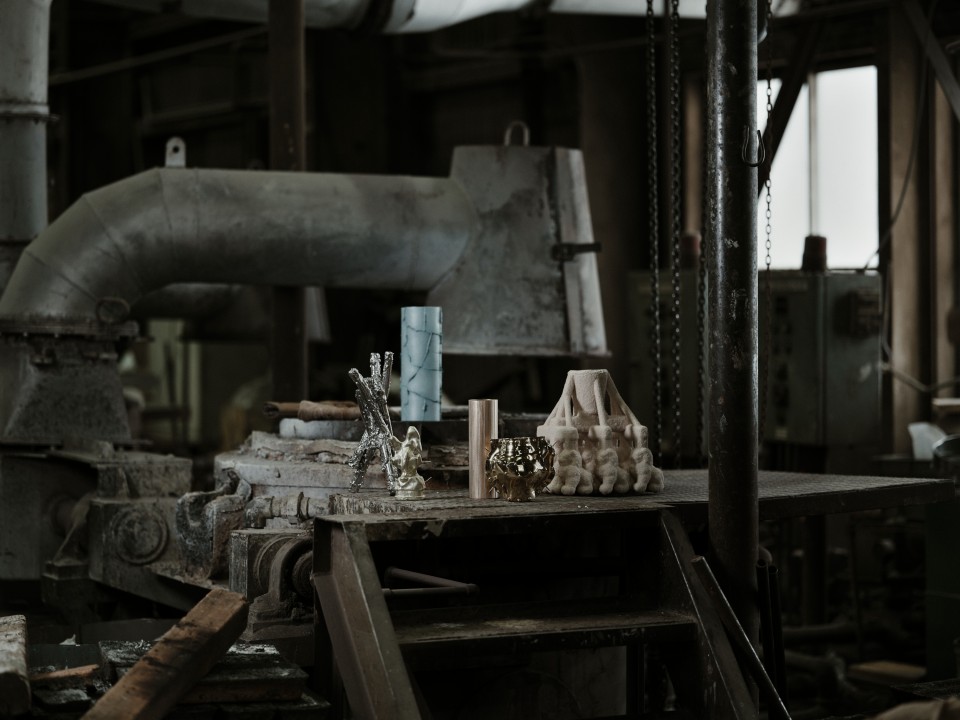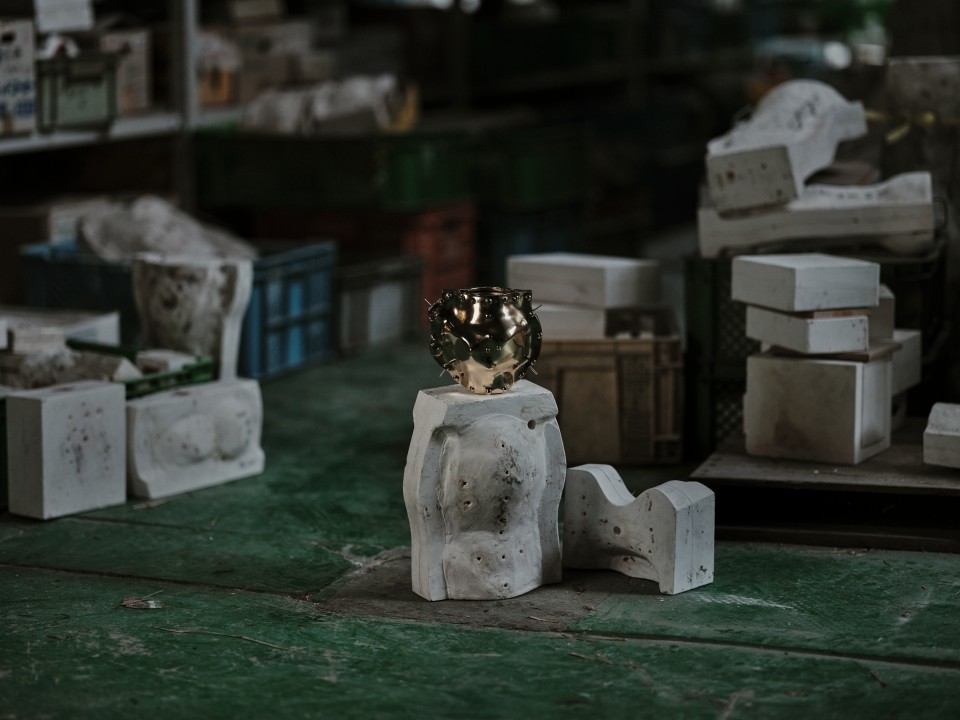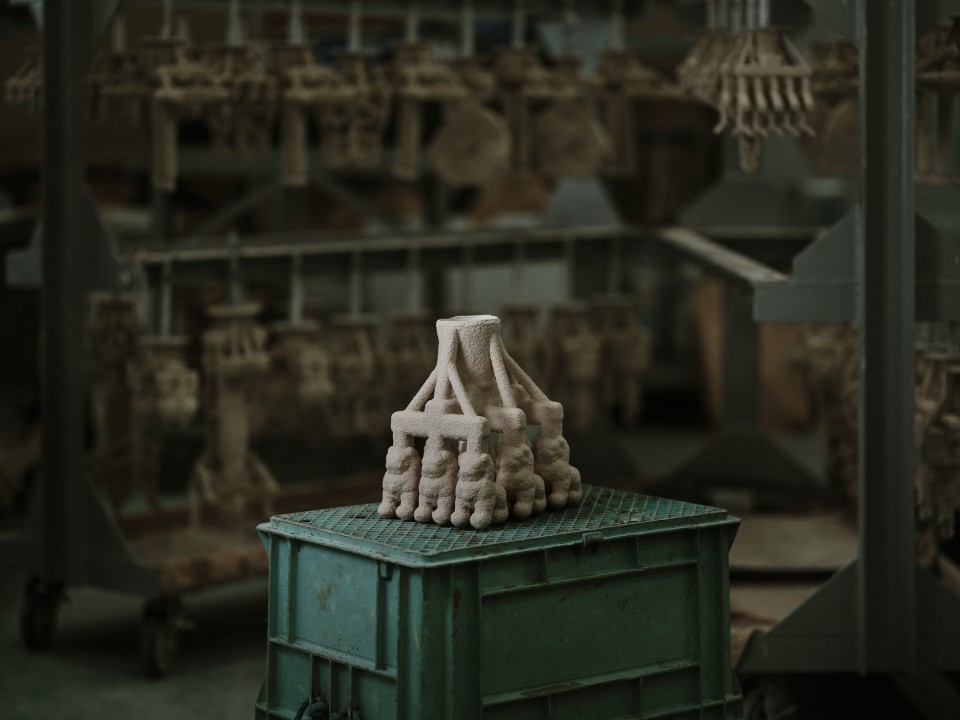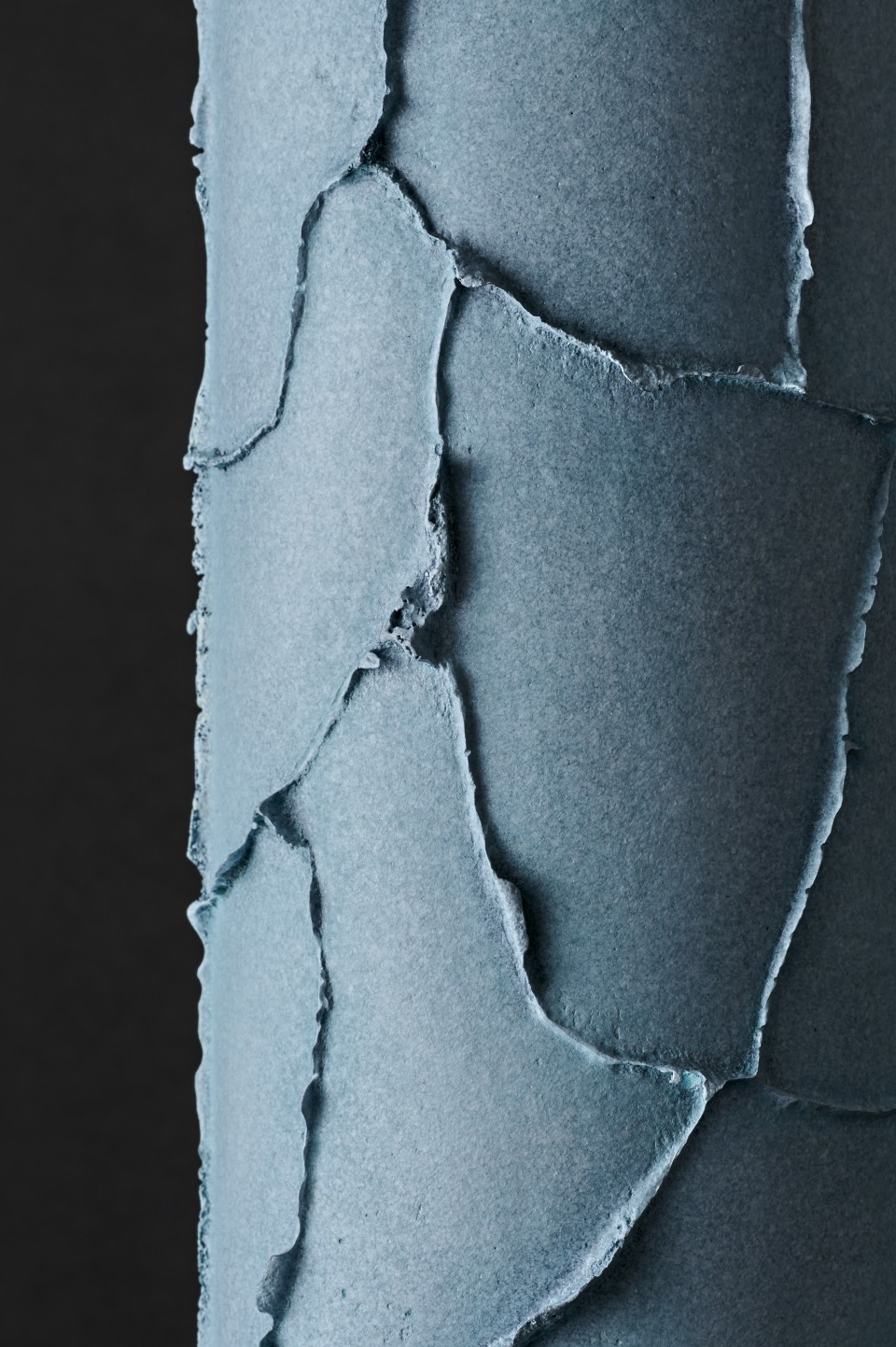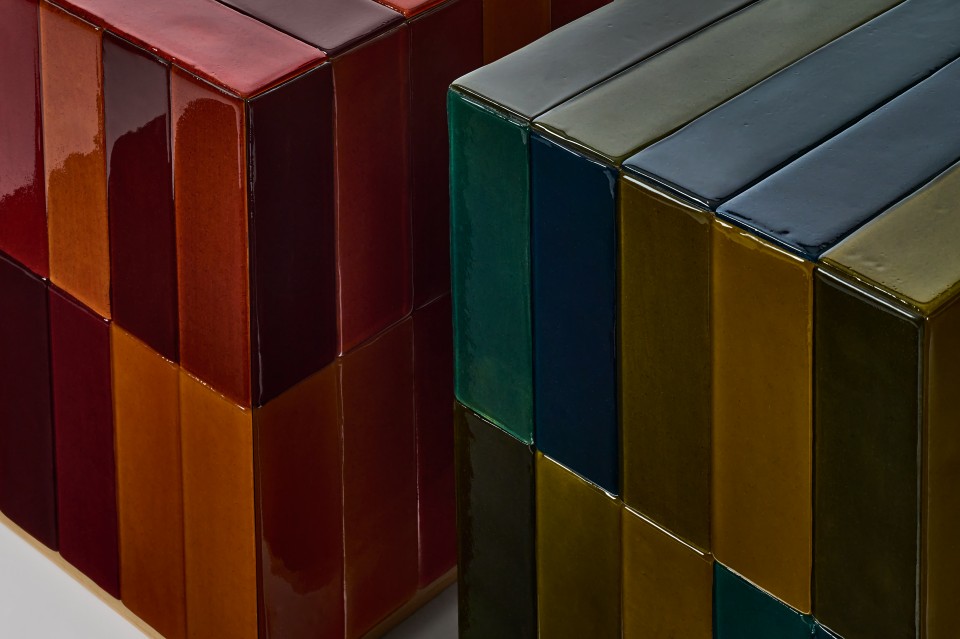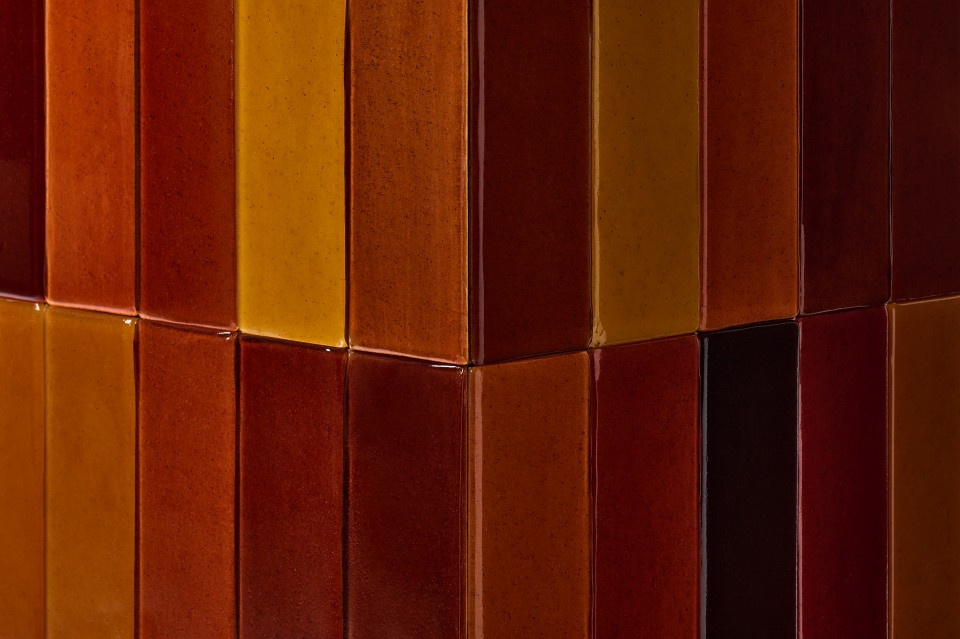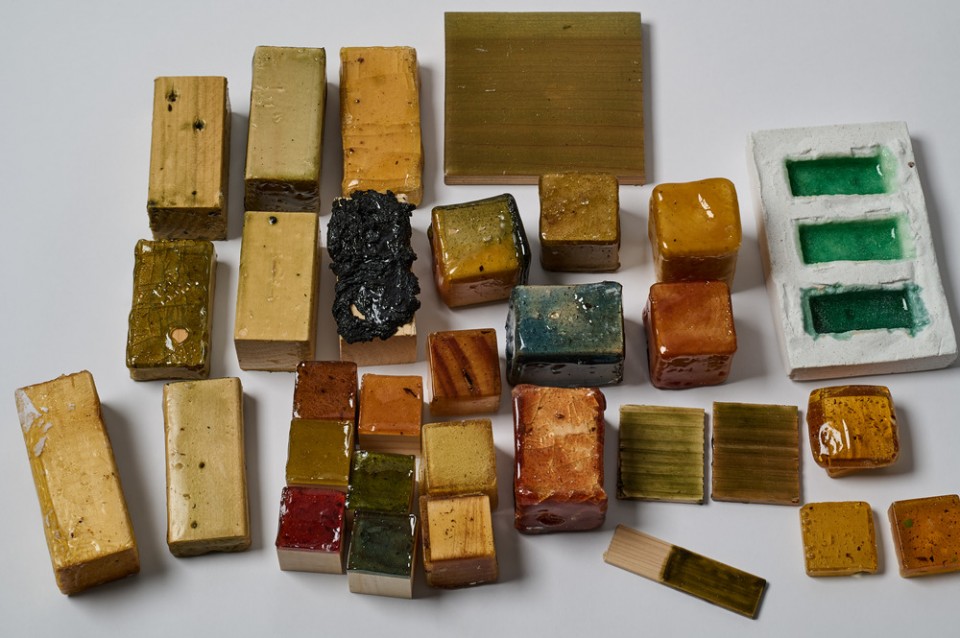You are here: Via Santa Marta 10
Art+Design
5vie event
physical event
Info
Via Santa Marta 10
Via Santa Marta 10
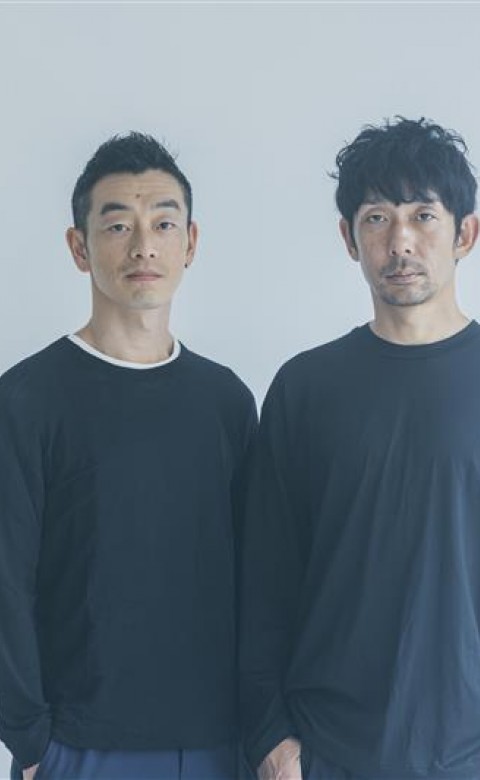
Heiwa Gokin × we+ Unveils “Unseen Objects,” Exploring the Beauty of Casting Culture
Heiwa Gokin, a foundry based in Takaoka city,has collaborated with contemporary design studio we+ to unveil “Unseen Objects,” a new series that explores the beauty of casting culture. This collection of vases reinterprets the tools, fixtures, material textures, and incidental forms found within the casting process—elements that have often been overlooked. By elevating the essence of advanced casting techniques into art, the project seeks to highlight the inherent beauty of casting culture. Through “Unseen Objects,” we aim to rediscover and redefine the value of casting craftsmanship, offering a fresh perspective on this time-honored tradition.
Takaoka city has been known as a center of casting copperware for over 400 years since the Edo period, with traditional techniques passed down through generations. It is also the only copperware production area designated as a traditional craft site by Japan’s Ministry of Economy, Trade and Industry in Japan. Among them, Heiwa Gokin, established in 1906, specializes in a wide range of casting, from large castings such as bronze statues, monuments, and religious artifacts, to small and intricate sculptures produced using lost-wax casting. Renowned for its exceptional technical expertise and sculptural craftsmanship, the company has received high acclaim for its manufacturing skills, producing works for prominent artists and beyond.
In this project, we+ made multiple visits to Heiwa Gokin’s factory, conducting an in-depth study of the casting process. Through this research, we identified and focused on the overlooked beauty that emerges in the daily process. As a result, we are presenting six unique pieces that capture and reinterpret this hidden aesthetics including, Casting Core, Rubber Mold for Lost Wax Casting, Ceramic Mold for Lost Wax Casting, Sand Residue, Burr and Iron Rod for Core Structure of Sand Mold.
Casting Core
The sand core used to create hollow spaces inside cast objects is transformed into an artwork that highlights its soft, organic form, giving new value to an element that is usually unseen.
Burr
Burrs, which are generally removed during the finishing process after casting, are intentionally preserved and reinterpreted as artworks, embracing the accidental formations that emerge naturally in the process.
Rubber Molds for Lost Wax Casting
The functional shape of rubber molds used in lost-wax casting is precisely reproduced, focusing on the beauty that exists within utility.
Ceramic Molds for Lost Wax Casting
Ceramic molds, which are normally destroyed during the production process, are preserved as artworks, capturing their ephemeral yet beautiful existence.
Sand Residue
By intentionally retaining the casting sand that is usually removed during the finishing process, this work explores the fusion of metal and casting sand, presenting new possibilities for cast objects.
Iron Rods
Iron rods used to secure sand molds for large castings often bear bends, weld marks, and other unique traces of the process. These features are embraced and elevated into expressive works of art.
we+ Presents “SO-Colored” a Project Exploring the Potential of Natural Microalgae Colors
Tokyo-based contemporary design studio we+ will unveil “SO-Colored,” a project exploring the potential of natural microalgae colors, at Galleria Rubin during Milan Design Week 2025. This project focuses on the natural pigments of micro-algae as a sustainable and innovative color source. While micro-algae have been extensively researched for their applications in food and biofuel, their color properties remain largely unexplored. Through “SO-Colored,” we+ investigates the expressive potential and practical applications of microalgae-derived colors, introducing a new perspective on future design and material innovation.
SO-Colored
Micro-algae, found everywhere from water and rocky surfaces to roadsides and even inside homes, first emerged around 2.7 billion years ago. These microscopic organisms have played a vital role in shaping the Earth’s environment by producing oxygen and fostering biodiversity. Recent research has revealed their vast potential in applications such as CO2 absorption, alternative energy sources to petroleum, pharmaceuticals, and functional foods. SO-Colored is a research project that explores the unique “colors” of micro-algae. While they are commonly associated with green, algae display a rich diversity of greens and, depending on their species and growth conditions, can also produce vibrant reds, yellows, and blues. These natural hues are vivid and profound, unlike any other in the natural world. For this project, powdered micro-algae are blended with naturally derived resins to develop an original material, which is then used to craft objects. This innovative approach seeks to uncover new possibilities for natural, sustainable colors.
*SO-Colored is a collaborative development project by we+ and Algal Bio Co., Ltd., utilizing algae powder developed by Algal Bio as a key coloring material.
